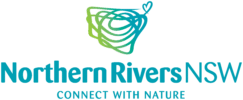Web design for landing pages is an important aspect of any online marketing campaign. A landing page is a standalone web page, created specifically for the purpose of a marketing or advertising campaign. It is designed to direct the visitor to take a specific action, such as making a purchase or filling out a form for more information.
The main goal of a landing page is to convert visitors into leads or customers. Therefore, it’s important to follow best practices and optimise your landing page for maximum conversion. Here are some tips and best practices for designing a successful landing page:

Keep the design simple and uncluttered
When it comes to web design for landing pages, simplicity is key. A clean and simple design helps to focus the visitor’s attention on the call to action (CTA). It’s important to avoid using too many colours, fonts, or graphics as they can be distracting and overwhelm the visitor.
Here are some additional tips for keeping your landing page design simple and uncluttered:
- Use a limited colour palette: Choose a few colours that complement each other and stick to them throughout the page. Avoid using too many colours as it can be overwhelming for the visitor.
- Use one or two fonts: Choose a font that is easy to read and stick to it throughout the page. Avoid using too many fonts as it can be distracting.
- Use white space effectively: White space, also known as negative space, is the empty space around and between elements on the page. It helps to separate different sections of the page and makes it easier to scan.
- Keep the page layout simple: Use a layout that is easy to follow and doesn’t have too many elements. A clean layout helps to keep the visitor’s focus on the CTA.
The Call to Action (CTA)
The CTA is the most important element of your landing page, as it is what you want the visitor to do. Therefore, it’s important to make sure your CTA is clear and compelling.
Here are some additional tips for creating a clear and compelling CTA:
- Make it stand out: Use a colour that contrasts with the rest of the page to make the CTA stand out. You can also use a larger font size or a different font to make it more noticeable.
- Use action-oriented language: Use language that encourages the visitor to act, such as “Sign up now,” “Get your free trial,” or “Learn more.”
- Make it specific: Be clear about what you want the visitor to do. For example, instead of using a CTA like “Submit,” use a CTA like “Sign up for our newsletter.”
- Place it in a prominent location: The CTA should be easy to find and should be placed in a prominent location on the page
Use social proof
Social proof is the idea that people are more likely to act if they see others doing the same. When it comes to landing pages, including customer testimonials or social media feeds can help to build trust and credibility. This can be especially effective if you’re selling a product or service.
Here are some tips for using social proof on your landing page:
- Use customer testimonials: Customer testimonials are a great way to show potential customers that your product or service is worth buying. Include a few short, positive quotes from satisfied customers to help build trust.
- Display social media feeds: If you have a large social media following, consider including a feed of your recent posts on your landing page. This can help to show potential customers that you have an active and engaged community.
- Use logos or badges: If you have any industry awards or certifications, consider including them on your landing page. This can help to build credibility and trust with potential customers.
By using social proof on your landing page, you can help to build trust and credibility with potential customers and increase the chances of conversion.

Optimise for mobile devices
With most of the internet traffic coming from mobile devices, it’s important to optimise your landing page for mobile. This includes using a responsive design and making sure the page loads quickly on all devices.
Here are some additional tips for optimising your landing page for mobile:
- Use a responsive design: A responsive design ensures that your landing page will look and function correctly on any device, regardless of screen size. This is important as it allows visitors on mobile devices to have the same experience as visitors on desktop.
- Make sure the page loads quickly: Slow loading times can be frustrating for visitors and may cause them to leave the page. Make sure your landing page loads quickly by optimising images, minifying code, and using a content delivery network (CDN).
- Keep the layout simple: A simple layout is easier to navigate on a small screen. Avoid using too many elements or columns as they can be difficult to read on a mobile device.
- Use large buttons: Make sure the CTA buttons are large enough to be easily tappable on a mobile device. This will make it easier for mobile visitors to take the desired action.
Use visual hierarchy
Visual hierarchy is the way that elements on a page are arranged to show their importance. When it comes to landing pages, it’s important to use visual hierarchy to help guide the visitor’s eye and make the page easy to scan.
Here are some tips for using visual hierarchy on your landing page:
- Use headings and subheadings: Use headings and subheadings to break up the content on your page and make it easier to scan. Make sure to use different font sizes and styles to differentiate between headings and subheadings.
- Use bullet points: Bullet points are a great way to list out important points or features of your product or service. They make the content easier to read and help to break up long blocks of text.
- Use images and graphics: Images and graphics can help to draw the visitor’s attention and make the page more visually appealing. However, be sure to use them sparingly and make sure they are relevant to the content.
- Use white space effectively: White space, also known as negative space, is the empty space around and between elements on the page. It helps to separate different sections of the page and makes it easier to scan.

Test and optimise
Testing and optimising your landing page is an important step to ensure that it is effective at converting visitors into leads or customers. One way to do this is through A/B testing, where you create two versions of the landing page and compare the results.
Here are some tips for A/B testing your landing page:
- Choose one element to test: It’s important to only test one element at a time so you can accurately determine what is causing any changes in conversion rates. Some elements you might consider testing include the CTA, headings, images, and layout.
- Use a small sample size: A/B testing works best with a large sample size, but it’s important to get results quickly. Start with a small sample size and then increase it if the results are not statistically significant.
- Monitor the results: Use tools like Google Analytics to track the results of your A/B test. Look at metrics such as conversion rate, bounce rate, and average time on page to see how the different versions of the page are performing.
- Make changes based on the results: Once you have the results of your A/B test, make changes to the version that performed better and continue testing. It’s important to continually test and optimize your landing page to ensure it is as effective as possible.
By following these best practices and tips, you can create a landing page that is optimised for conversion and helps to drive more sales or leads for your business.
Web design for landing pages is an important aspect of any online marketing campaign. A landing page is a standalone web page, created specifically for the purpose of a marketing or advertising campaign. It is designed to direct the visitor to take a specific action, such as making a purchase or filling out a form for more information.
To create a successful landing page, it’s important to follow best practices and optimise for maximum conversion. This includes keeping the design simple and uncluttered, using a clear and compelling CTA, using social proof, optimising for mobile, using visual hierarchy, and continually testing and optimising the page.
By following these best practices and tips, you can create a landing page that is effective at converting visitors into leads or customers and helps to drive more sales or leads for your business.

Convert visitors into leads and customers with a professionally designed landing page from JezNorthWeb
Are you looking for a way to increase conversions and drive more sales or leads for your business? A well-designed landing page is a crucial element of any online marketing campaign. At JezNorthWeb, we have the skills and expertise to create a landing page that is optimised for conversion and helps to achieve your business goals. Our team of experienced web designers will work with you to understand your business and create a landing page that resonates with your target audience. We will use best practices and proven techniques to create a page that is visually appealing, easy to navigate, and focused on the call to action.
Don’t miss out on the opportunity to increase conversions and drive more sales or leads for your business. Contact JezNorthWeb today to learn more about how we can help you create a brilliant landing page.







